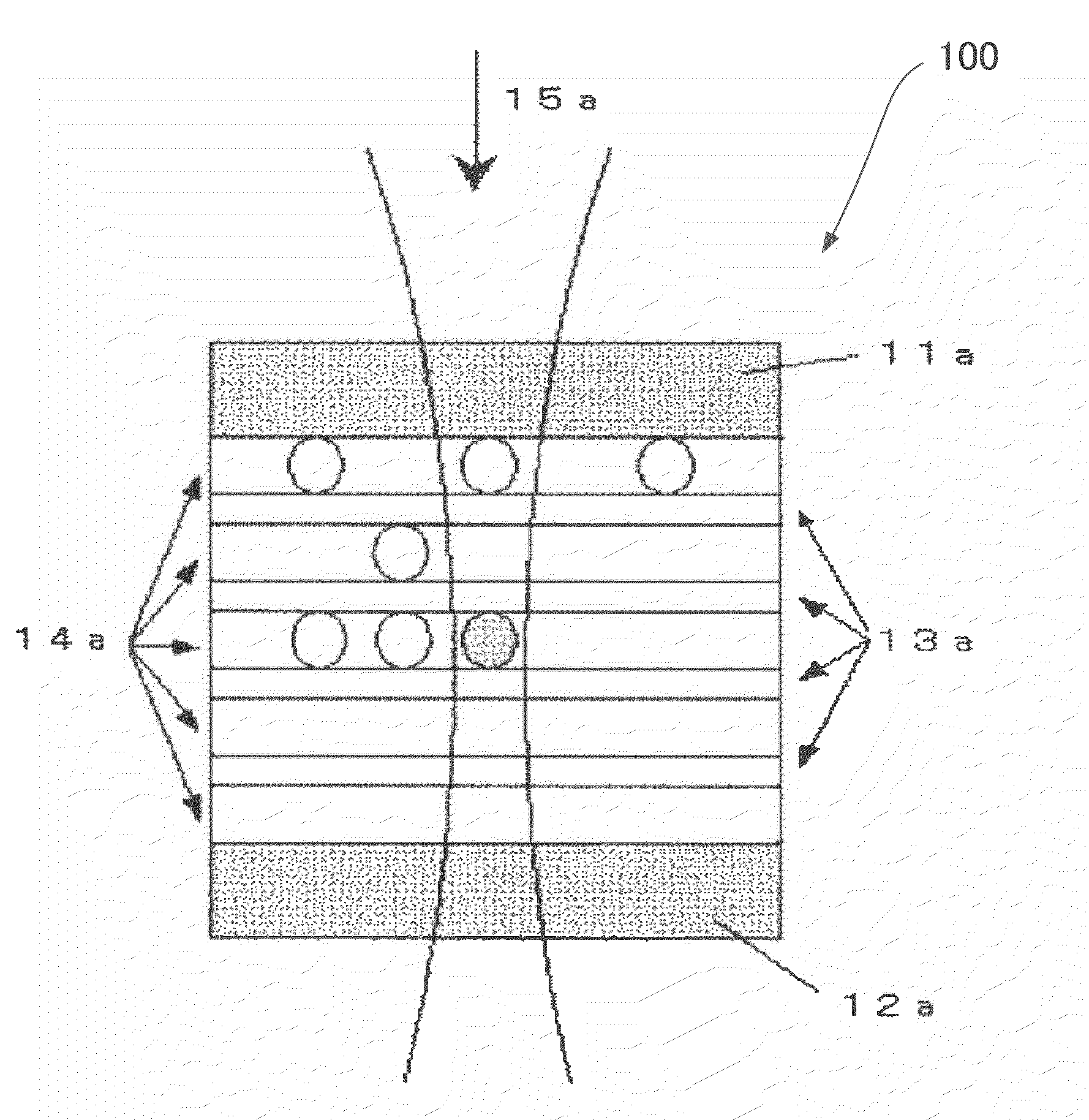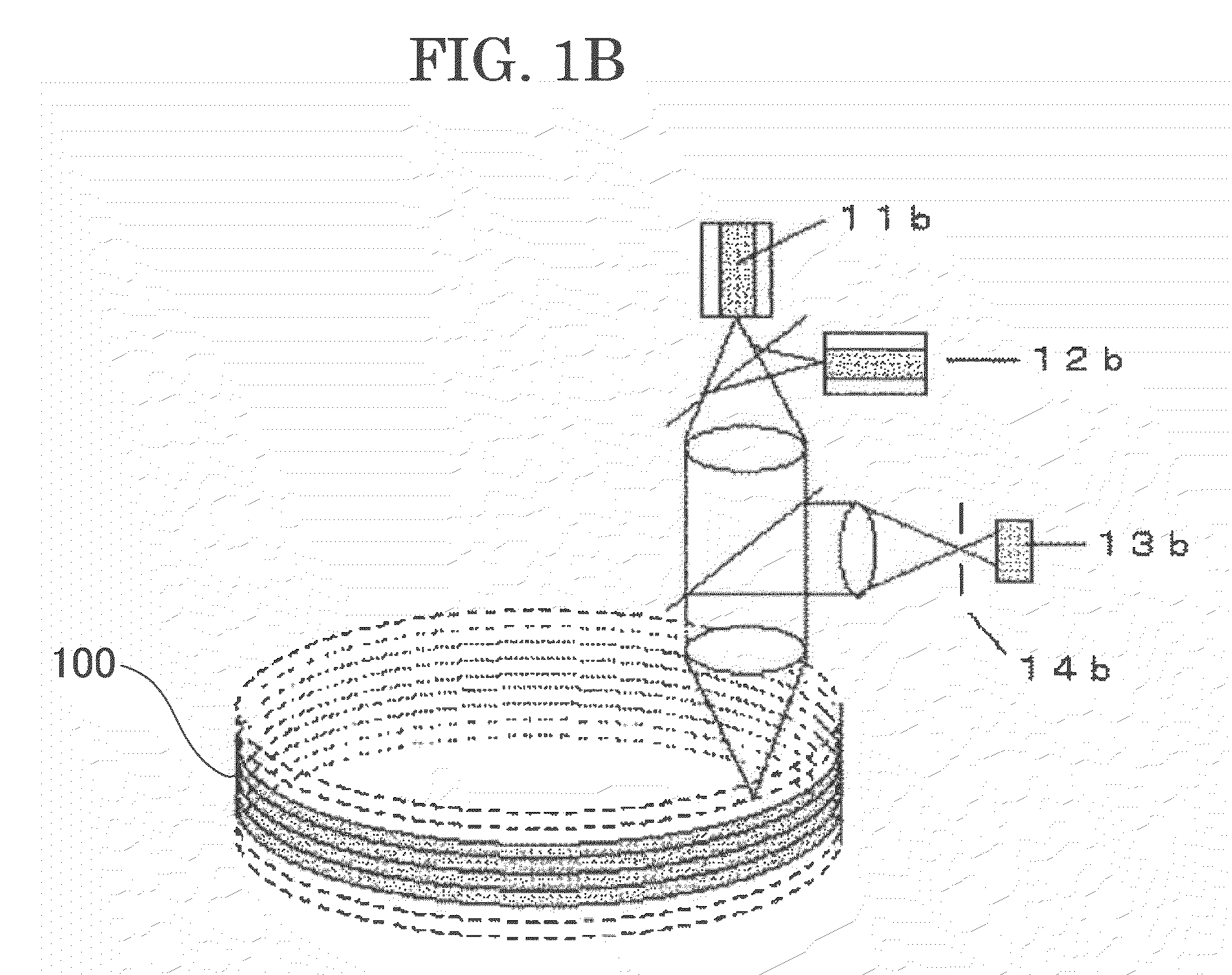Two-photon absorption material and application thereof
a technology of absorption material and absorption compound, which is applied in the field of two-photon absorption material, can solve the problems of insufficient capacity, insufficient s/n ratio of reproduction, and extremely small two-photon absorption efficiency of two-photon absorption compound, and achieves high efficiency of transition
- Summary
- Abstract
- Description
- Claims
- Application Information
AI Technical Summary
Benefits of technology
Problems solved by technology
Method used
Image
Examples
first embodiment
Two-Photon Absorption Material
[0183]A two-photon absorption material of the present invention is a compound represented by the following General Formula (I).
[0184]where R1 to R8 each represent a hydrogen atom, a halogen atom, a carboxyl group, a carboxylic acid ester group, a substituted or unsubstituted aryl group, or a substituted or unsubstituted alkyl group; one to three of X1 to X4 each represent a substituted or unsubstituted amino group, a substituted or unsubstituted aminophenyl group, a substituted or unsubstituted dialkylaminophenyl group, a substituted or unsubstituted N,N-diphenyl-aminophenyl group, a substituted or unsubstituted indolyl group, or a substituted or unsubstituted azulenyl group, and the other represents or the others each represent a hydrogen atom, a halogen atom, a carboxyl group, a carboxylic acid ester group, a substituted or unsubstituted aryl group, a substituted or unsubstituted pyridinyl group, a substituted or unsubstituted alkyl group or a perhalo...
second embodiment
Two-Photon Absorption Material
[0195]A two-photon absorption material according to a second embodiment is represented by General Formula (I) in which at least one of X1 and X3 is a phenyl group having, as a substitutent, an alkyl group, an alkoxy group, a trifluoromethyl group, a nitro group, a cyano group or a carboxylic acid ester group, or a substituted or unsubstituted pyridinyl group, with the proviso that when only one of X1 and X3 is the phenyl group or the pyridinyl group, the other is a hydrogen atom or a halogen atom; and at least one of X2 and X4 is a substituent represented by (a) or (b) given below, with the proviso that when only one of X2 and X4 is the substitutent, the other is preferably a hydrogen atom or a halogen atom.
[0196]Specifically, the two-photon absorption material according to a second embodiment is two-photon absorption materials represented by the following General Formula (I)′:
[0197]where R1 to R8 each represent a hydrogen atom, a halogen atom, a carbox...
third embodiment
Two-Photon Absorption Material
[0205]A two-photon absorption material according to a third embodiment of the present invention is represented by the following General Formula (A):
[0206]where R1 to R8 each represent a hydrogen atom, a halogen atom, a nitro group, a cyano group, a hydroxyl group, a carboxyl group, a substituted or unsubstituted alkyl group, a substituted or unsubstituted alkoxy group, a substituted or unsubstituted aryl group, a substituted or unsubstituted amino group, or a substituted or unsubstituted acyl group; X1 and X2 each represent a hydrogen atom, a halogen atom, a nitro group, a cyano group, a hydroxyl group, a carboxyl group, a substituted or unsubstituted alkyl group, a substituted or unsubstituted alkoxy, group, a substituted or unsubstituted aryl group, a substituted or unsubstituted amino group, a substituted or unsubstituted acyl group, or a group having a substituted or unsubstituted triphenylamine structure which group may be bonded via a linking grou...
PUM
| Property | Measurement | Unit |
|---|---|---|
| Absorption cross section | aaaaa | aaaaa |
| Absorption cross section | aaaaa | aaaaa |
| Absorption cross section | aaaaa | aaaaa |
Abstract
Description
Claims
Application Information
 Login to View More
Login to View More - R&D
- Intellectual Property
- Life Sciences
- Materials
- Tech Scout
- Unparalleled Data Quality
- Higher Quality Content
- 60% Fewer Hallucinations
Browse by: Latest US Patents, China's latest patents, Technical Efficacy Thesaurus, Application Domain, Technology Topic, Popular Technical Reports.
© 2025 PatSnap. All rights reserved.Legal|Privacy policy|Modern Slavery Act Transparency Statement|Sitemap|About US| Contact US: help@patsnap.com



